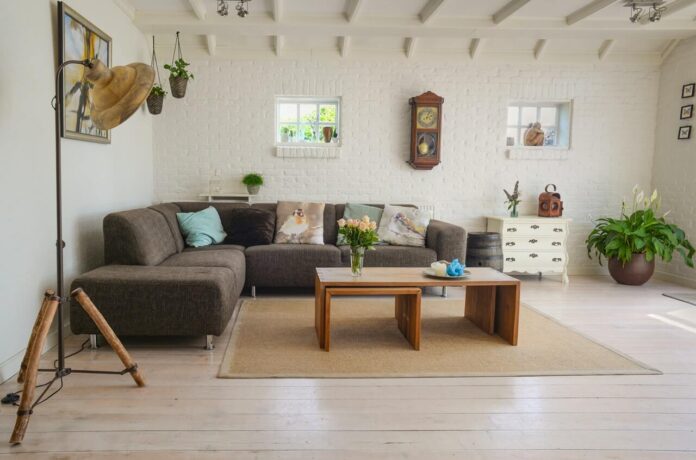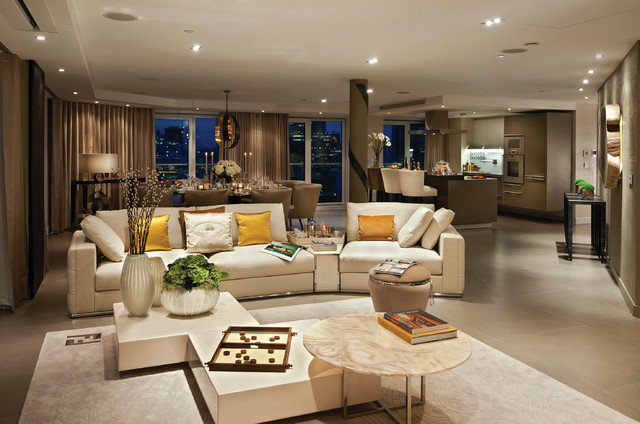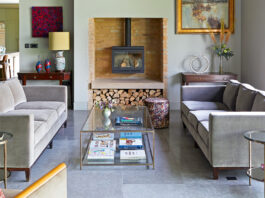With autumn in full swing, we know that winter is just around the corner. After the year that we’ve had, many people are feeling a little nervous about what winter is going to feel like in the midst of a pandemic. Lockdown and minimal social interaction amid cold and dreary weather seems like a whole new level of isolation. Many of us are aware that we’re going to need to put in some effort if we’re going to finish the year up with some comfort.
Because so many of us will be spending even more time in our homes, many are looking towards improving the coziness of their living spaces as a way to cope. They’re not mistaken in this approach. Our environment can have a direct impact on our wellbeing. There are simple tweaks you can make at home to create feelings of warmth, comfort, and coziness. The following seven tips will help you invoke some much needed warm fuzzy feelings in your space.
1. Switch Out Your Light Bulbs For Warmer Toned Lighting
One small and inexpensive way to drastically improve the comfort of your space is to look into switching out your lightbulbs. Lighting comes in all different shades and temperatures and is going to be affecting your mood whether you are aware of it or not. Try switching out bright whites or blue-tinted lights for warmer yellows and oranges. You may be blown away by the impact of such a small change. As a bonus, you might also want to choose environmentally friendly bulbs that conserve energy and save you money when it comes to utilities.

2. Textures Are Important
Pillows, blankets, and rugs all can add immense coziness if you know what to look for. You want materials that are soft to the touch, but not ones that conduct static like crazy. Synthetic materials like polyester and rayon can increase the static and leave you with that itchy, hair-standing-up feeling.
Carefully chosen textiles can improve the Hyggeligt of your space. Typically, this trendy Danish word is translated as coziness, but those at simplycushions.com.au suggest that the term covers much more than that, defining it as “an indefinable sense of warmth, welcome, and well being.” Studying Hygge choices is one of the fastest ways to understand how to manage coziness in your home and lifestyle, and you’ll be hard-pressed to find any breakdown of Hygge that doesn’t include soft textures.
3. Include Lamps With Dim Or Mood Lighting Options
Including traditional or salt lamps that have a dim option for the evenings can also improve the mood of your space. Think about how, for ages, humans gathered around the fire every evening. We now gather around the television, which is an entirely different discussion—but the impact this switch has on the lighting, and therefore the mood of our spaces is massive. There are lamps and lighting fixtures options available that recreate the warm glow of a firelit night. Your DNA remembers the comfort in this and you will be surprised to see how strongly this type of lighting can influence your mood for the positive.
4. Don’t Neglect Scents
When it comes to influencing the scent in their space, many people do more damage than good when they make their choices. As it turns out, most fragrances and candles have toxic ingredients. Stay away from any products containing fragrance, parfum, or paraffin wax. Instead, scent your space with essential oils and choose candles made from beeswax. Vanilla and cinnamon are two of the most common scents that come to mind when people think about coziness but don’t think of it as a hard and fast rule. Scent and memory are intrinsically connected, so when choosing aromas for your space look for something that brings about feelings of home and warmth. Make sure that you ask your partner for their input as well! Who knows what memories they have associated with the scents you’re looking at.
5. Boost The Natural Light Available

Beyond your artificial lights, you may want to play up the natural lighting available in your space during the day. Natural lighting improves our mood and helps keep our circadian rhythms strong. While adding in more windows sounds amazing, many of us don’t have the luxury of such a big expense. Instead of renovating, you can hang a mirror opposite the window you do have. This will reflect and amplify the natural lighting.
6. Incorporate Nature Whenever You can
Houseplants can add comfort and coziness to your space. As it turns out, having house plants is good for your mental health as well. Beyond the obvious inclusion of flowers and plants, you can add rustic elements like interesting pieces of driftwood or that stone you picked up while on vacation. Including some of the outside inside your home is soothing and being calm is an integral part of feeling cozy.
7. Decorate With Objects That Tell A Story
Family photographs, children’s drawings, souvenirs, gifts, or antiques with a rich history are all items worth having on display in your living room. Gone are the days when it was trendy to have your home look like it has never been lived in. If you want your space to feel alive and welcoming, it needs to look like someone actually lives in it.
If followed, the above seven tips set you on the right track to improve the coziness of your living space. You’ll notice that many of the tricks are geared more towards tweaking ambiance than making larger fashionable purchases. This is because, when it comes to creating an inviting and cozy living room that people feel comfortable in, the overall feeling of the room is far more important than the latest trend. Just because something is visually appealing doesn’t mean it’s going to be emotionally appealing when you interact with it every day. The goal is to create a space that is welcoming, where you and your family can have long conversations over a cup of tea. The living room should be for living, not for zoning out in front of the television.










